Introduction
The Windows and Linux services helps you monitor the operating system specific services for the Windows and Linux devices in your environment.
Monitoring using Linux services
Linux Services Monitor helps you track the status of the Linux services in your environment. The main purpose of using the Linux Services Monitor is to observe the application availability and faster detection of failures. You can check the status using a return code with one of the following values:
THE Linux services monitor tracks the status of Linux services by observing application availability and detection of failures. The status uses one of the following return codes:
0: Running1: Stopped
The agent raises an alert if the original status does not match the return code.
To manage Linux services, a Linux services monitor can be added using Setup > Monitoring > Templates > Other Monitors. For more information, see Validate Template.
After applying the template to a device, the template can be validated if it is assigned to a resource.
Creating Linux services monitors
To create a Linux services monitor:
- Select a client from the All Clients list.
- Go to Setup > Monitoring > Templates.
- From TEMPLATES, click +Add. The monitor template appears.
- From MONITOR TEMPLATE, provide the details for the following parameters and click Save:
- Select Template Scope: The partner template or client-specific template. For the client-specific template, select the client.
- Collector Type: The application type used to gather information. Select the agent.
- Applicable for: The type of the application.
- Template Name: The name of the template.
- Description: The summary of the template.
- Generation: The generation that the template belongs to. For example, Generation 2.
- Tags: The user-defined tags used for enhanced filtering.
- Prerequisites: The essential prerequisites to consider while monitoring using a template. For a Windows template, as an example, check the SQL services while monitoring SQL parameters.
- Status: The active or end-of-life templates.
- Notes: Additional information to add to the template.
- Template Family Name: The category that applies to the application. For example, Windows server, storage server, and network server.
- Deployment Type: Select one of the following methods to apply the template to resources:
- Custom
- Optional
- Standard
- After configuring the template, go to Other Monitors and click +Add. The other monitors screen appears.
- From the options displayed in Monitor Type drop-down, select Linux services monitor. The Linux services monitor screen appears.
- From the Linux Services Monitor section, click Add to provide more detailed parameters.
Click Add and Remove to increase or decrease the following settings:- Frequency: The intervals used to monitor the services. The recommendation is 15 minutes.
- Alert: Select Alert to receive alerts for any match.
- Apply Availability Monitor: Select the checkbox to show the availability of the monitors.
- Priority: The priority of the alert.
- Articles: The articles that you can add.
- Service Name: The name of the service to monitor.
- Return Code: The return code to check the service status command. The Agent raises an alert if the return code does not match.
For example, the SSH service is inactive and you provide 0 in the return code field. The Agent after monitoring raises a critical alert when the original service status does not match with the return code. An OK alert is sent if the return code matches.
For example, the SSH service is inactive and a 0 is entered in the return code field. After monitoring, the agent raises a critical alert when the original service status does not match the return code. Otherwise, an OK alert is sent if the return code matches.

Add Linux Services Monitor
After adding a template with a Linux services monitor, assign the template to a device to start monitoring.
Managing Linux services monitors
Linux services monitor details can be viewed and modified when added to a template. Perform the following actions to manage the Linux services monitor:
- Edit: Click the template name displayed on the templates screen to modify the monitor details.
- View: View the monitor details in the templates screen. Click the arrow next to the template name to view the Linux services monitor added to the current template.
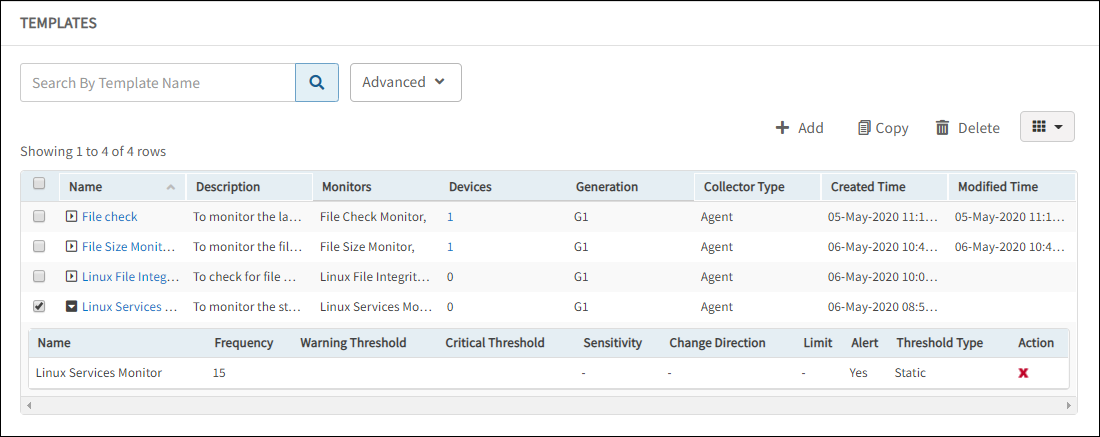
Manage Linux Services Monitor
Validating templates
The graphical data is displayed for each name configured in the Linux services monitor. Monitor graphs can be viewed under Infrastructure > Resources > Device Details > Metrics. The graph displays the monitor details using ghe return code of the services.
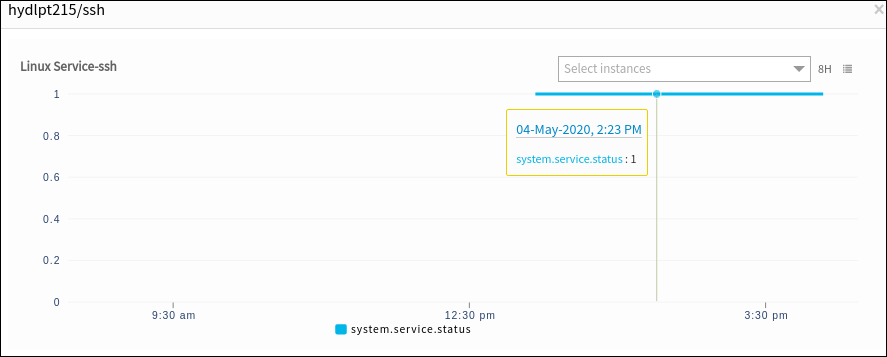
Validate Template
Linux services monitor alerts
Critical alerts are sent while monitoring the services and the status does not match the return code. View the alerts in the Alert browser. Examine the alert description to verify the last modified time.
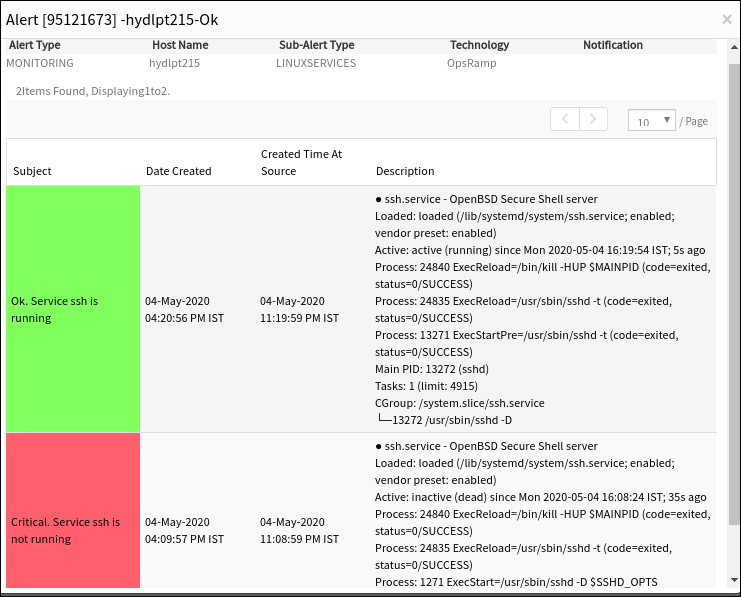
Linux Services Monitor Alerts
Monitoring using Windows services
Using Windows services, you can:
- Monitor service status.
- Monitor specific or all Windows state changes.
- Generate alerts using Agent-based monitoring templates.
Use the following global template and metric name to monitor your Windows services:
Template name: Agent G2 - Windows Services Monitoring
Metric name: system.windows.service.status
Prerequisite
- Include service names (with comma separated) in the Value text-box while assigning the template to a device. For example,
opsramp-agent,opsramp-shield,svsvc,vmickvpexchange,wuauserv.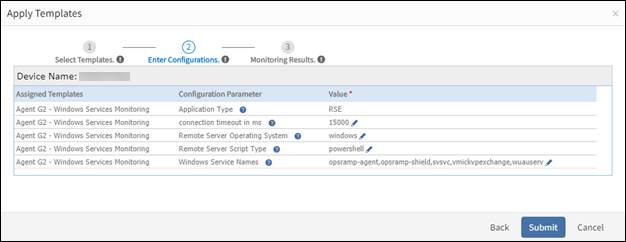
Service Names
- Install OpsRamp Agent on the target device to run the scripts.
Validating templates
After the configured services are running on the target devices, view the metric graph using Infrastructure > Resources > Device Details > Metrics. The graph displays the following metric values:
- 1 - Services are running
- 0 - Services are not running
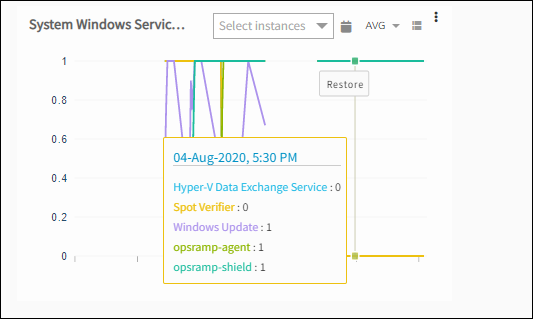
Validating Templates
Windows services monitor alerts
View the Windows services alerts in the Alert browser. Examine the alert description to view the last modified time.
